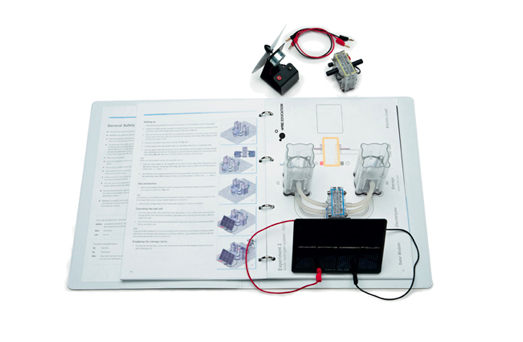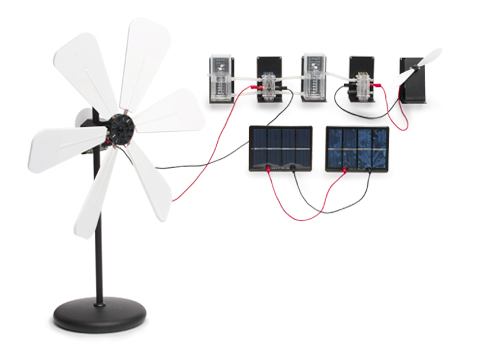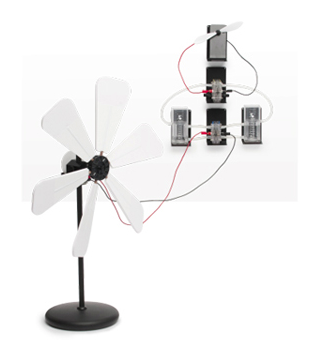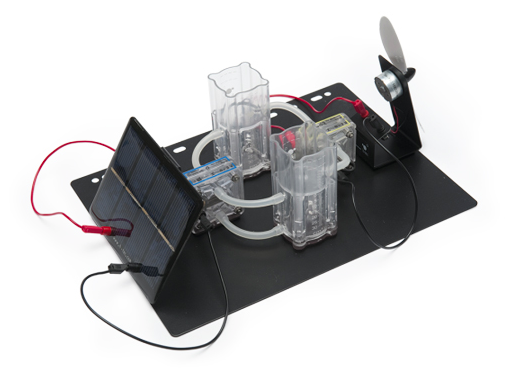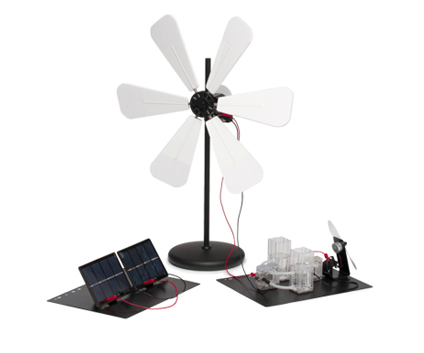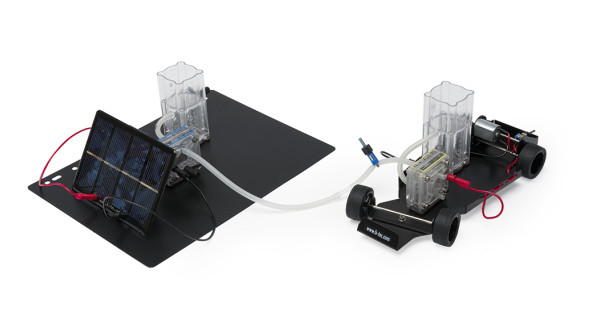Item no.: T111
The Tutorial Renewable Set is your complete solution for teaching renewable energy, consisting of: Tutorial Teacher Set, Solar Wind Set, and Measurement Set. The sets feature modular components for flexibility as well as easy set-up and use, and allow experiments across the whole range of hydrogen applications, including automotive applications, solar, and wind experiments. The TUTORIAL Renewable Set includes:
- A wind turbine on a stand. Provides electricity for electrolysers or other loads
- Fuel cells with air-breathing option
- Magnetic bases, allowing horizontal or vertical assembly. Also includes metallic vehicle chassis for solar and fuel cell car set-ups
- Redesigned gas storage tanks with a compact and easy-to-use design and easy-to-read measurement marks
- A specially-designed experiment binder with instructions and templates for each experiment, all printed on waterproof paper for use in the lab
The wind turbine can be run indoors with ordinary table fans, or in any breeze. It can be paired with the PEM electrolyser cell to allow a number of experiments in the realm of renewable energy. For instance, run solar experiments to power the electrolyser and store the resulting hydrogen and oxygen gases. Then, generate power with the PEM fuel cell in either H2/O2 or H2/Air mode. Finally, build a self contained solar-hydrogen-system, or fill up a hydrogen-powered model car at its own solar hydrogen station. The TUTORIAL Renewable Set also includes a Direct-Methanol Fuel Cell (DMFC), as well as the PEMFC Kit, which allows students to assemble and disassemble a working PEM fuel cell. A convenient set of holder brackets allows you to present the components on any magnetic whiteboard.
Experiments possible with T111 – Tutorial Renewable Set
- Assembling a fuel cell
- Producing and storing hydrogen
- Determining a solar module’s characteristic curve
- Hydrogen/oxygen or hydrogen/air operation
- Determining an electrolyser’s characteristic curve
- Determining electrolyser efficiency
- Learning about Faraday’s laws
- Determining a PEM fuel cell’s characteristic curves
- Determining fuel cell efficiency
- Determining the decomposition voltage of water
- Building a model hydrogen car
- Using methanol to generate electricity
- Determining a DMFC’s characteristic curve
- Influence of the surface of a solar module on voltage and current intensity
- Voltage and current in a series connection of solar panels
- Voltage and current in a parallel connection of solar panels
- Voltage and current in a solar panel as a function of light intensity
- The characteristic current-voltage curve of a solar panel
- Creating electrical energy from wind energy
- Effects of the wind speed and direction
- Influence of the number of rotor blades
- Influence of different blade positions
- Observation of a wind wheel under load
- Current-voltage characteristic of the wind generator
- Using hydrogen technology to store electrical energy from wind
- Concept of an autarkic system with renewable energy

